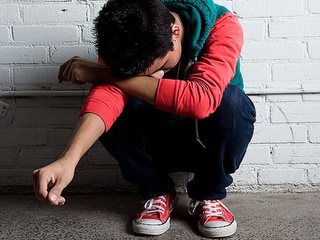Number of children & teens on anti-depressants doubles since 2007 – what happened in 2007?!
 NZ Herald 7 June 2017
NZ Herald 7 June 2017
Family First Comment: I wrote about the mental health for children issue in the analysis report I did on the anti-smacking law in 2016
https://www.familyfirst.org.nz/research/smacking-law-2016/.
Note that the deterioration of mental health for children began around 2007 according to this story in the NZ Herald. What happened in 2007?! Here’s what our analysis showed (pg 22-23)…..
The number of children and teenagers on Prozac-style anti-depressants has soared 98 per cent in the last 10 years to a total of nearly 15,000 young people last year
Ministry of Health figures released to the Herald under the Official Information Act (OIA) showed 2163 children aged 13 or under collected a prescription of antidepressants known as Selective Serotonin Re-uptake Inhibitors (SSRIs) last year – an increase of 79.4 per cent since 2006.
The number of 14 to 18-year-olds who collected a prescription of SSRIs increased 101.9 per cent in the same timeframe to a total of 12,617 people last year.
Overall, 299,958 people were prescribed and collected the drugs last year – an increase of 64.9 per cent over the last 10 years.
READ MORE: http://www.nzherald.co.nz/nz/news/article.cfm?c_id=1&objectid=11870484&ref=NZH_Tw
MENTAL HEALTH
One of the arguments frequently used by advocates of smacking bans is that smacking increases the future risk of a child suffering mental health problems.One would reasonably expect that the mental health of children in New Zealand would therefore improve or show some positive indicators as a consequence of the smacking ban in 2007. As shown below, that is not the case.
The Ministry of Health’s Mental Health and Addiction Service Use tables provide us with statistics related to the number of children seen by mental health and addiction services provided by DHBs and NGOs. 
It is significant that the numbers have notably worsened immediately following the introduction of the anti-smacking law.
The Ministry of Health’s Annual Update of Key Results 2014/15: New Zealand Health Survey report corroborates this trend. In this report, ‘emotional and/or behavioural problems’ refers to depression, an anxiety disorder, attention deficit disorder (ADD) and/or attention deficit and hyperactivity disorder (ADHD).
Surveyors recorded children as having been diagnosed with emotional and/or behavioural problems if their parents indicated that they had been told by a doctor at some time in their child’s life that the child had one of these conditions.
Around 32,000 children aged 2–14 years (4.0%) had been diagnosed with emotional and/or behavioural problems at some time in their life. The percentage of children with diagnosed emotional and/or behavioural problems has increased since 2006/07 (13,805 children – 1.8%). According to the survey, there has been a statistically significant change since 2007.
According to the survey, boys were 1.6 times more likely to have ever been diagnosed with emotional and/or behavioural problems than girls after adjusting for age differences.
Hospitalisation for children and teenagers also shows a disturbing trend with a 71% increase in admissions for mental and behavioural disorders since 2007.
No attempt is being made to argue that the anti-smacking law has directly contributed to increasing rates of mental illness. But the latest stats on mental illness should be considered when anti-smacking groups like EPOCH claim that smacking increases the risk of mental health problems and to look at the overall picture of the wellbeing of our young people over the past decade, and especially since the anti-smacking law was passed.






